Der Euro des Kaukasus
and Portrait of Europa
Diptych two channel video installation,
Video, color, sound,12 min. 20 sec.
2019 Hand-made Azerbaijani carpet
wool, silk
300 x 200 cm
2020
In collaboration with:
Robert Kalina, Vienna, Austria
YARAT Contemporary Art Space
Baku, Azerbaijan
Cittadellarte – Fondazione Pistoletto
Biella, Italy
Zili ART - Creator of the new path
Baku, Azerbaijan
EN
“Cessa i singhiozzi, e a ben portare un’alta Fortuna impara: recherà il diviso Orbe il tuo nome”.
Orazio, Odi III 27, vv. 75-76
Der Euro des Kaukasus (The Euro of the Caucasus) is a two-channel video installation
“Cessa i singhiozzi, e a ben portare un’alta Fortuna impara: recherà il diviso Orbe il tuo nome”.
Stop sobbing and learn to accept your good fortune: a part of the world will be named after you.
Orazio, Odi III 27, vv. 75-76
Der Euro des Kaukasus (The Euro of the Caucasus) is a two-channel video installation
created in 2019 and presented at the end of a residency in Baku, in Azerbaijan, at the YARAT Contemporary Art Space, promoted by Cittadellarte – Fondazione Pistoletto in Biella.
The work mainly focuses on three elements used by political and economic power: architecture, monuments and money, and how these constitute national and transnational identity.
The first channel of video is shot between Vienna and Baku, and consists of an interview with Robert Kalina, the Austrian designer of the Euro and the Manat (Azerbaijan’s currency).
In the first part of the video, Robert Kalina illustrates the visual and symbolic characteristics
of the Euro, stressing the intentions of the ECB to generate, through the currency, a “collective imaginary that could unify all the nations of the Eurozone.” The second part of this first video is dedicated to the Azeri Manat. In the early 2000s, the Austrian National Bank was entrusted by the Azeri National Bank with designing and minting the new Manat. The Azeri National Bank hired Robert Kalina in order to obtain a formal and symbolic similarity with the Euro.
The second channel shows footage of abandoned Soviet monuments and buildings shot in various areas of the former Soviet bloc (Hungary, Bulgaria, Georgia and Azerbaijan), with a brief final sequence shot in Vienna. The buildings and the monuments presented in the video were created with the purpose of glorifying socialist values, unifying all the nations that used to be part of the former Soviet bloc. These sites, today in ruins, abandoned and hidden away, have become a refuge for stray dogs and cats.
On the occasion of the solo show Per Tina (Sterischer Herbst Parallel Program 2020), Der Euro des Kaukasus was placed in dialogue with Portrait of Europa; a 300 x 200 cm carpet, hand-made in Azerbaijan, which depicts an enlargement of a detail of about 2 x 1 cm of a 10 euro banknote. The portrait on the carpet portrays the face of the Myth of Europe, constantly present on all euro banknotes (with the exception of the 500) and surrounded by the various decorative motifs present on the banknotes.
The face of Europa is the only anthropomorphic element on the euro banknotes, only slightly visible in two places—the silver hologram, from which the image on the carpet is taken, and on the watermark—both part of anti-fraud systems.
IT
Orazio, Odi III 27, vv. 75-76
In occasione della mostra personale, Per Tina (Sterischer Herbst Parallel Program 2020), Der Euro des Kaukasus è stato integrato e messo in dialogo con Portrait of Europa; un tappeto di 300 x 200 cm, realizzato a mano in Azerbaijan, che raffigura un ingrandimento di un dettaglio di circa 2 x 1 cm di una banconota da 10 euro. Il ritratto sul tappeto raffigura il volto del Mito di Europa, soggetto costante su tutta la cartamoneta in euro (ad eccezione di quella da 500€) e circondato dai vari motivi decorativi presenti sulle banconote.
“Cessa i singhiozzi, e a ben portare un’alta Fortuna impara: recherà il diviso Orbe il tuo nome”.
Smettila di
singhiozzare ed impara ad accettare la tua fortuna: una parte del
mondo prenderà da te il nome.
Orazio, Odi III 27, vv. 75-76
Der
Euro des Kaukasus (L'Euro del Caucaso) è
una video installazione in due canali realizzata durante il 2019 e
presentata al termine di un periodo di residenza a Baku in
Azerbaigian
presso YARAT Contemporary Art Space, promossa da
Cittadellarte - Fondazione Pistoletto
di Biella.
L'opera si concentra principalmente
su tre elementi utilizzati dal potere politico ed economico:
architetture, monumenti e denaro,
e come questi costituiscano elementi identitari nazionali e
transnazionali.
Il
video nel primo canale
è girato tra Vienna e Baku, e consiste in un'intervista realizzata a
Robert Kalina, il designer austriaco degli Euro e dei Manat (la
valuta dell'Azerbaigian).
Nella prima parte Robert Kalina illustra
le caratteristiche visive e simboliche dell'Euro, soffermandosi sui
propositi della BCE di generare attraverso la valuta un immaginario
collettivo che potesse unificare tutte le nazioni della zona
comunitaria. La seconda parte del video è dedicata ai Manat azeri.
Nei primi anni 2000 la Banca nazionale austriaca venne incaricata
dalla Banca nazionale dell'Azerbaigian di realizzare e coniare il
nuovo Manat. La Banca nazionale dell'Azerbaigian assunse Robert
Kalina al fine di ottenere una somiglianza formale e simbolica con
l'Euro.
Il video nel secondo canale mostra filmati di monumenti e
architetture sovietiche abbandonate filmati tra varie aree dell'ex
blocco sovietico (Ungheria, Bulgaria, Georgia e Azerbaigian) con una
breve sequenza finale girata a Vienna.
Le architetture e i
monumenti qui presenti un tempo avevano lo scopo di glorificare i
valori del socialismo unificando tutti i Paesi che ne facevano
parte.
Questi soggetti oggi in rovina, abbandonati o relegati in
magazzini, sono diventati rifugi per cani e gatti randagi.
In occasione della mostra personale, Per Tina (Sterischer Herbst Parallel Program 2020), Der Euro des Kaukasus è stato integrato e messo in dialogo con Portrait of Europa; un tappeto di 300 x 200 cm, realizzato a mano in Azerbaijan, che raffigura un ingrandimento di un dettaglio di circa 2 x 1 cm di una banconota da 10 euro. Il ritratto sul tappeto raffigura il volto del Mito di Europa, soggetto costante su tutta la cartamoneta in euro (ad eccezione di quella da 500€) e circondato dai vari motivi decorativi presenti sulle banconote.
Il volto di Europa è l'unico elemento antropomorfo presente sulle banconote in euro, ed appare leggermente visibile in due punti: sull’ologramma argentato (da cui è tratta l'immagine sul tappeto) e sulla filigrana. Entrambi sono elementi del sistema antifrode.

Signature of Robert Kalina on banknotes of 5 Euros and 1 Manat, 2019
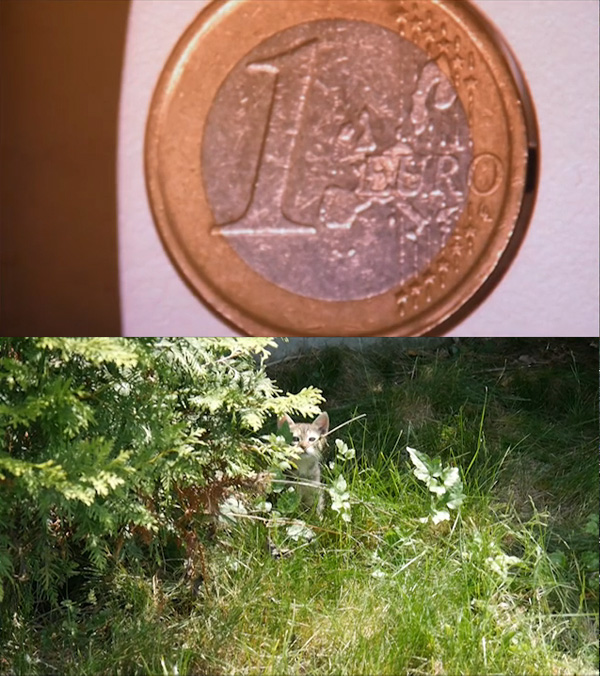



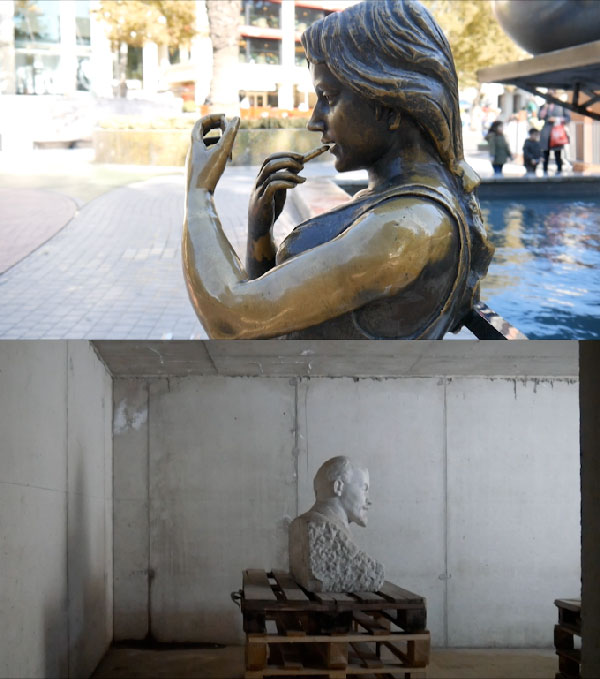
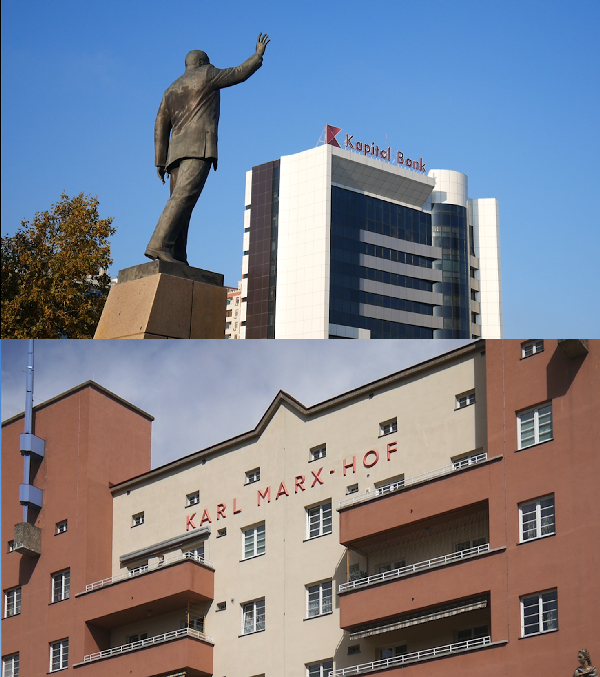
Ryts Monet, Der Euro des Kaukasus, video stills, 2019
---


Europa and the bull and detail, vase, 360 B.C., Louvre Museum, Paris (from Taranto)
The detail of the portrait of Europa has been used for the watermark and the silver mark of the second series of euro


Portrait of Europa, detail of a 10 euro banknote (second series) reproduced on the carpet
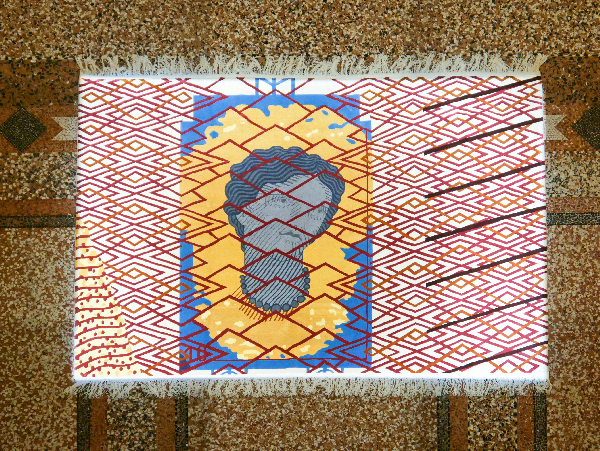
Ryts Monet, Portrait of Europa, 2020

Workers during the production of Portrait of Europa, photo documentation.
This image has been image used for the invitation card of Per Tina, solo show at Steirischer Herbst Parallel Program,
QL Gallery, Graz, Austria, 2020.
The carpet “Portrait of Europa” measures 300 x 200 cm has been entirely hand-woven in Azerbaijan
from local workers during spring-summer 2020 at the carpet factory of Zili Art, Baku.
Zili Art, like many other local carpet manufacturers, produces hundreds of carpets each year which they sells in the global luxury market.
The artwork has been financially supported by QL Gallery.

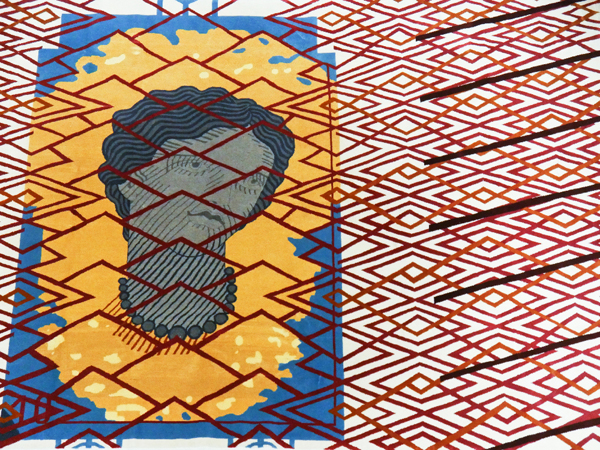
Ryts Monet, Portrait of Europa, (details) 2020
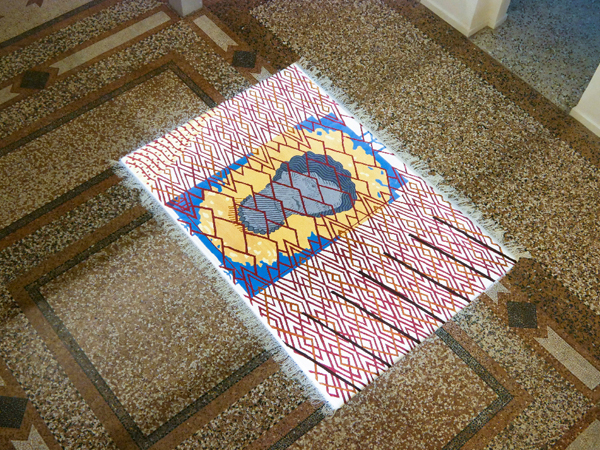

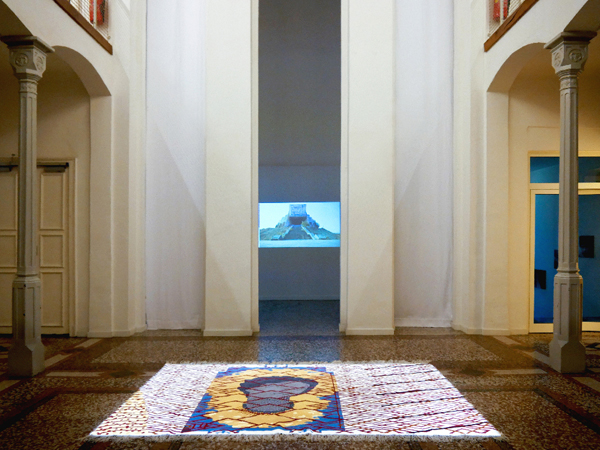
Portrait of Europa and Der Euro des Kaukasus, installation views at Per Tina, Steirischer Herbst Parallel Program,
QL Gallery, Graz, Austria, 2020